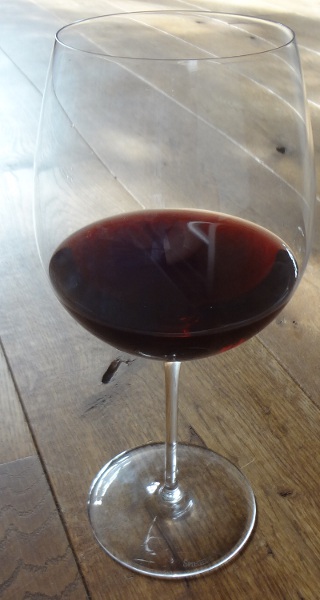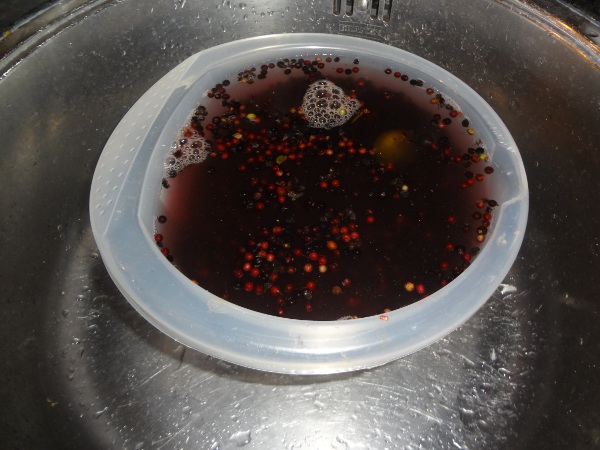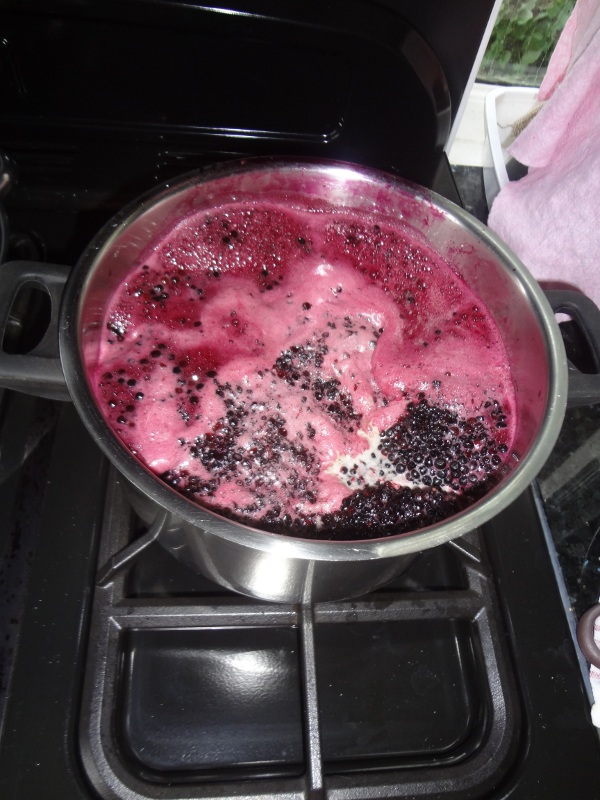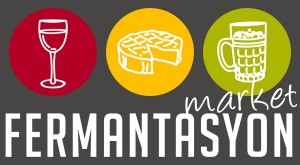 “Did your fish die?”
“Did your fish die?”
“No, this is actually a wine glass.”
A special wine glass, for special wines. I bought it to be part of the snobbish wine people. It is crystal and very expensive for a stingy Dutch person as me. But sometimes you have to buy yourself a present right?
I don’t use it unless I have a special wine and that is what is in it today. Elderberry wine is proof that a home winemaker can make wine as good as professionals. Maybe even better because a home winemaker does not have to worry about regulations, financial risks, complaining customers etc.
Making red wine has been a great struggle for me because there are no grapes in the Netherlands. Yes, we have grapes in the supermarket but they are not suitable for making wine. I almost gave up but then I “discovered” elderberries.
A lot of them are growing where I live and in 2009 I made my first 10 liters. I tried it after 6 months because I was very curious but it was undrinkable. Extremely harsh tannins. I did not think that this could work out but after 2 years it was a great wine. It completely changed in the bottles. Fascinating. Since then I make it every year. It is a lot of work and you need a lot of patience but I think it is the best red wine in the world. It is strong, has a beautiful color, very natural, full bodied. It can compete with the best.
Not to mention that elderberries seem to be very healthy.
Preparing the berries.
- Pick as much berries as you possibly can. Leave them in a shed or outside for a night so the spiders and other bugs can crawl out.
- De-stem the berries. I have not found an easy way to do this. I read somewhere that you should freeze them first but that does not work with these big quantities. So you have to do it the hard way.
- Place the berries in a bowl of water to clean them. The ones that are not ripe will float to the surface. Throw them away.
- Put the berries in small bags and place them in the freezer until you have enough.
Making the wine.
These are the specifications to keep in mind. Strong red wine, not acidic: 4 or 5, a bit high alcohol percentage: 13%, amount: 25 liters.
I measured the sugar contents a long time ago and there is very little sugar in these berries. Only 300 grams in 7 kg. Unfortunately the berries are so dark that it is impossible to make an acidity measurement with the test kit. Since I think there should not be too much acid in the wine I decided not to add any.
Based on the above and previous tries I use the following recipe:
Ingredients for 25L:
- 7 kg elderberries
- 2 bananas
- 6 kg sugar (=240 g/l which means 13,3% alcohol)
- red wine yeast
- Yeast nutrition
Method:
- De-freeze the elderberries in a bucket the night before.
- Boil and mash the berries with some water, the sugar and the bananas.
There are three reasons to do this:
- The internet claims that they contain “toxic” Sambunigrin which leaves when the berries are boiled.
- So far I have not sterilized the berries.
- By boiling the berries you also get more juice from them.
- Place the hot juice in the fermentor and add water to approximately 20 liters.
- Wait for the bucket to cool down.
- Dissolve yeast nutrition and add it.
- Hydrate your yeast and add it.
During the first few days you can see that the skins of the berries are pushed upwards by the CO2 gas. You need to have space in the bucket otherwise the skins will block the air lock and possibly the lid will be forced to violently leave the fermenter with colorful -mainly red- consequences for the interior of your house.
Shake the (closed) bucket vigorously a few times per day to get the skins in the fluid.
- After 7 to 10 days, take the berries out of the most, squeezing the liquid from them. This is usually a little bit messy and the berries can leave terrible stains. They really are like paint.
- Place the most in a 25 L demijohn.
- When the fermentation has calmed you can add water to 25L.
- After a few months you can rack it and then leave it for a long time.
The wine is ready after 2 years and can be kept for a long time.
Cheers
Hans




